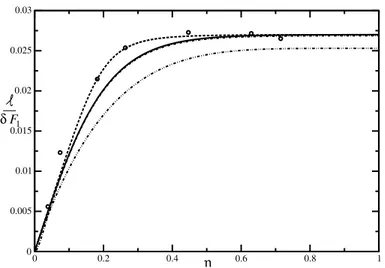On the generation of the mean velocity profile for turbulent boundary layers with pressure gradient under equilibrium conditions
Texte intégral
Figure




Documents relatifs
2014 Experimental measurements have established that when a turbulent boundary-layer approaches separation, separates or interacts with a shock-wave, the turbulence
The research is developed in situ with the measurements of all the parameters affecting the thermal comfort, characterizing the indoor and the outdoor environments, while
We have therefore computed the optimal energy growth sus- tained by a zero pressure gradient turbulent boundary layer using the eddy viscosity associated with the turbulent
We are interested in the spectral element discretization of the Stokes problem in a two- or three-dimensional bounded domain, when provided with boundary conditions on the
Meanwhile, from Figure 6 (b), it can be seen that the heat transfer strength increases with the Reynolds number due to the increase in the velocity magnitude and
A measurement campaign was performed to describe the spatial correlations of the wall- normal velocity in a zero pressure gradient turbulent boundary layer.. Two LDV systems
It is important to notice that constitutive equations for the free energy χ and constitutive assumption for the virtual work functional may be incompatible 10 : for any
The test campaign also aimed at getting a better understanding about the nature of the acoustic wave itself generated inside a flexible pipe that is subjected to FLIP





